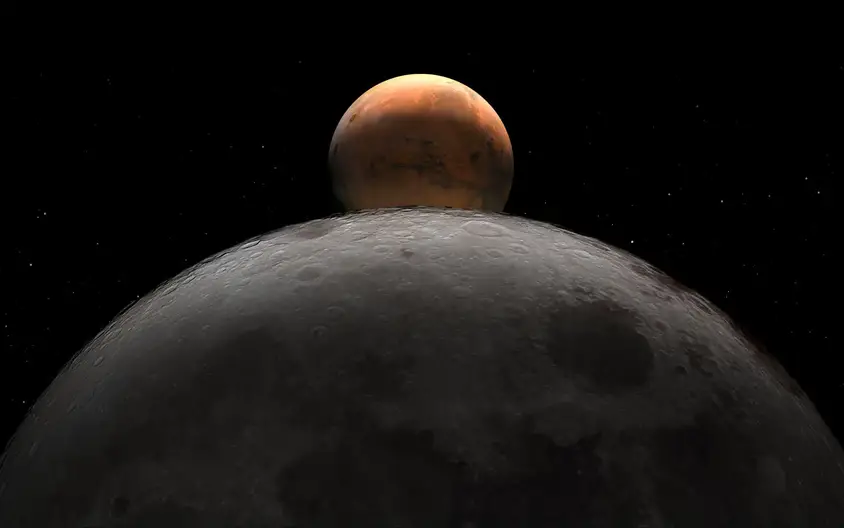NASA completed its first Architecture Concept Review to align its Moon to Mars exploration strategy, which includes yearly updates to incorporate new technologies and objectives. The agency aims to establish a long-term human presence on the Moon and explore Mars under the Artemis program. Credit: NASA

Some news about NASA’s Moon to Mars Architecture …
Chalk up another one for NASA’s frequent flyer on Mars …
And yes, this spacecraft “scan” find things in the sky …
A few of the stories to tell you about – This Week at NASA!
First Moon to Mars Architecture Concept Review Results
NASA released results of the agency’s first Architecture Concept Review, an analysis process to align NASA’s Moon to Mars exploration strategy and codify the supporting architecture. The architecture defines the rockets, spacecraft, spacesuits, operations, and other elements needed to support human missions to the Moon and Mars. Learn more at nasa.gov/moontomarsarchitecture.
NASA’s Ingenuity Mars helicopter made history when it achieved the first powered, controlled flight on another planet on April 19, 2021. A little less than two years later, on April 13, 2023, it completed its 50th flight. Here are some highlights from the rotorcraft’s journeys on the Red Planet. Credit: NASA/JPL-Caltech/ASU/MSSS
Ingenuity Mars Helicopter Completes 50th Flight
April 19 marked the two-year anniversary of NASA’s Ingenuity helicopter’s first flight on Mars. To date, it has completed 50 flights on the Red Planet, and reached a new altitude record of 59 feet. Ingenuity, a technology demonstration designed to prove powered, controlled flight on another planet was possible, was expected to make no more than five flights.

All-sky cylindrical (plate carrée) projection of TESS images. Credit: NASA/MIT/TESS and Ethan Kruse (University of Maryland College Park)
TESS Celebrates Fifth Year Scanning Sky for New Worlds
On April 18, NASA’s Transiting Exoplanet Survey Satellite, or TESS, celebrated five years in space. In that time, TESS has mapped more than 93% of the entire sky, discovered 329 new planets, and provided new insights into an array of cosmic phenomena, from stellar pulsations and exploding stars to supermassive black holes.

NASA Earth Day 2023 poster. Credit: NASA
NASA Celebrates Earth Day
On April 20 and 21, we hosted free Earth Day events at Union Station in Washington, D.C., with hands-on activities to illustrate the many ways NASA does Earth science. We also hosted a virtual Earth Day celebration with interactive online content and resources, including some available in Spanish. For more about NASA’s Earth Day activities, visit nasa.gov/earth-day-2023.
That’s what’s up this week @NASA.
Source: scitechdaily








